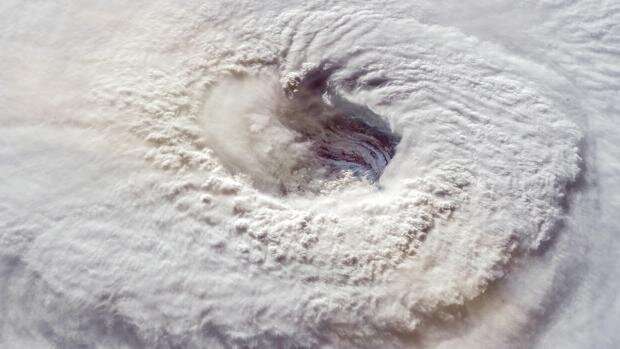Applying physics principle to meteorology yields grim prediction on hurricane destruction in an era of global warming

Global warming could lead to hurricanes even more powerful than meteorologists currently forecast. That warning came from a physicist researching the behavior of tropical cyclones who noticed that one of the principles of physics— phase transition—did not appear in the scientific literature of meteorology.
Edward Wolf, professor emeritus at the NYU Tandon School of Engineering, examined the most robust data sets on tropical hurricanes—compiled by noted atmospheric scientist Kerry Emanuel in 2006 on Atlantic storms dating as far back as the 1930s off the coast of Africa. In a paper published recently in the journal Theoretical and Applied Climatology, Wolf demonstrated that the destructive power of these tropical hurricanes increased linearly and rapidly as water temperature increased—in contrast to most meteorological calculations, which lead to more optimistic outcomes.
"This approach indicates the destructive power of Atlantic hurricanes off Africa could reach three times their current level if water temperatures rise by 2 degrees Celsius—well within the range that scientists predict is likely by the year 2100," Wolf said. "The same calculations would apply to any tropical basin on Earth, and I am working with Dr. Emanuel now to explore this new concept in the hope that it will advance scientists' predictive ability."
The journal paper showed how Wolf's calculations aligned with what has become accepted science: Hurricanes require a surface water temperature above 26.5 degrees Celsius (79.7 degrees Fahrenheit). And every plot of Emanuel's graph of his power dissipation index values-versus-ocean temperature substantiated Wolf's initial suspicion that phase transitions—such as the transition from water to vapor—indicate just how much kinetic energy is released as the water that was turned to vapor by a hurricane then cools and falls to Earth as liquid.
More information: E. L. Wolf. Critical behavior of tropical cyclones, Theoretical and Applied Climatology (2019). DOI: 10.1007/s00704-019-03040-2
Provided by NYU Tandon School of Engineering





















